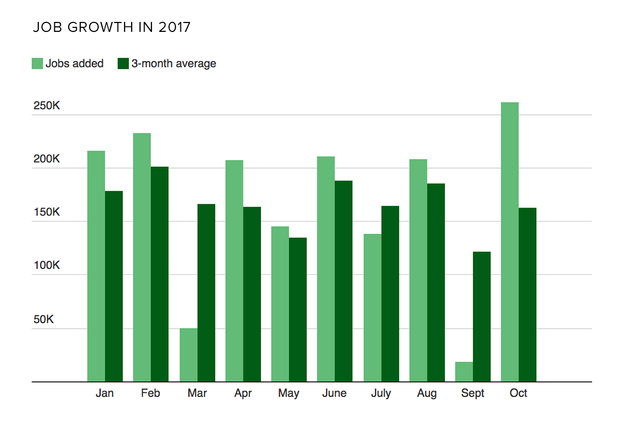
U.S. President Donald Trump shakes hands with Jerome Powell, his nominee to become chairman of the U.S. Federal Reserve at the White House in Washington, U.S., November 2, 2017. REUTERS/Carlos Barria
November 2, 2017
By Gertrude Chavez-Dreyfuss
NEW YORK (Reuters) – Federal Reserve Board Governor Jerome Powell, who has voted to support Fed Chair Janet Yellen’s low interest rate policies, may not be as negative for the U.S. dollar in the long term as originally thought, investors and analysts said on Thursday.
Earlier on Thursday President Donald Trump tapped Fed Governor Jerome Powell to become head of the U.S. central bank, breaking with precedent by denying Janet Yellen a second term but signaling a continuation of her cautious monetary policies.
Financial markets have typically viewed Powell as bearish for the dollar because he has supported gradual interest rate rises, rather than more aggressive moves. The dollar has consequently sold off on reports that he will be the next chair. However, some believe that Powell would be a net positive for the greenback.
“The dollar is more likely to turn up under Powell because the economic trajectory in the U.S. is going up,” said Richard Benson, managing director and co-head of portfolio investments at Millennium Global in London.
Some candidates that had been floated as potential chairs had more hawkish views on monetary policy, indicating a more aggressive pace of interest rate increases which could have benefited the dollar more.
Still, Powell’s nomination by President Donald Trump ensures continuity in the Fed’s monetary policy. That should mean the Fed is on track to raise interest rates multiple times and that the unwinding of the balance sheet remains on track.
Higher interest rates boost the yield of dollar assets, making them more attractive to investors. In the same vein, shrinking the Fed’s balance sheet, by not re-investing the proceeds of its earlier bond purchases as they mature, is also good for the dollar because it means lower bond purchases by the U.S. central bank.
Analysts say this will be a bright spot for a dollar that has struggled for most of the year as the Trump administration stumbled early on with respect to its promise of significant tax reform and fiscal stimulus.
The dollar is down 7.3 percent against a basket of currencies so far this year, but over the last two months, it has gained 1.7 percent, helped by better economic data and recent progress on the Republican party U.S. tax reform plan which should strengthen the dollar’s outlook.
On top of that, the European Central Bank has backtracked on its own stimulus by extending its own asset-buying program, which has stalled the euro and elevated the dollar.
Some investors view Powell as slightly more hawkish on monetary policy than Yellen and that could support the dollar more than Yellen’s policies.
“The fact that Powell voted with Yellen doesn’t mean he’s going to be as dovish as Yellen,” said Jason Lejonvarn, global investment strategist at Mellon Capital in London.
In fact, Powell’s previous comments suggested he was not in favor of further accommodation for the U.S. economy, Lejonvarn said.
In September, Powell voted to start winding down the Fed’s balance sheet. In February, he said a new round of asset purchases should be an option “only in extraordinary circumstances.”
Investors say as long as the Fed stays the course on monetary policy, the dollar should continue to do well.
“At the end of the day, whoever is the Fed chair, the U.S. economy is going to do well and so is the dollar,” said Millennium Global’s Benson.
(Reporting by Gertrude Chavez-Dreyfuss)

